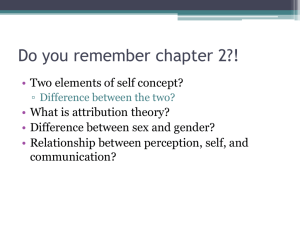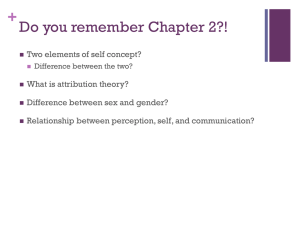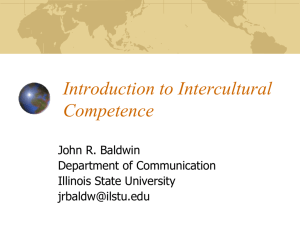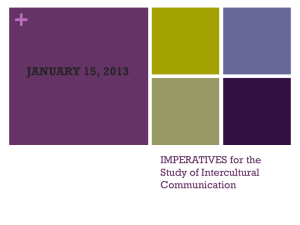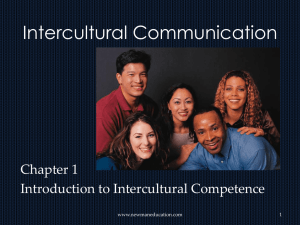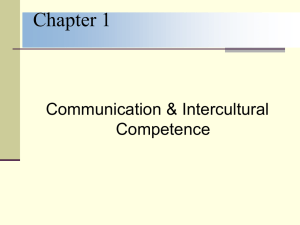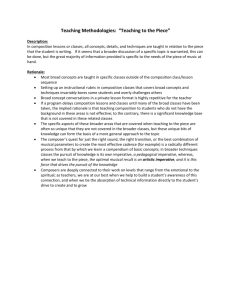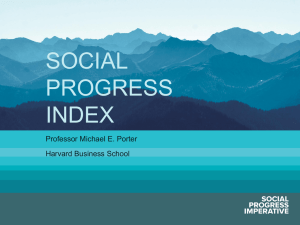Communication, Culture, and Identity
advertisement
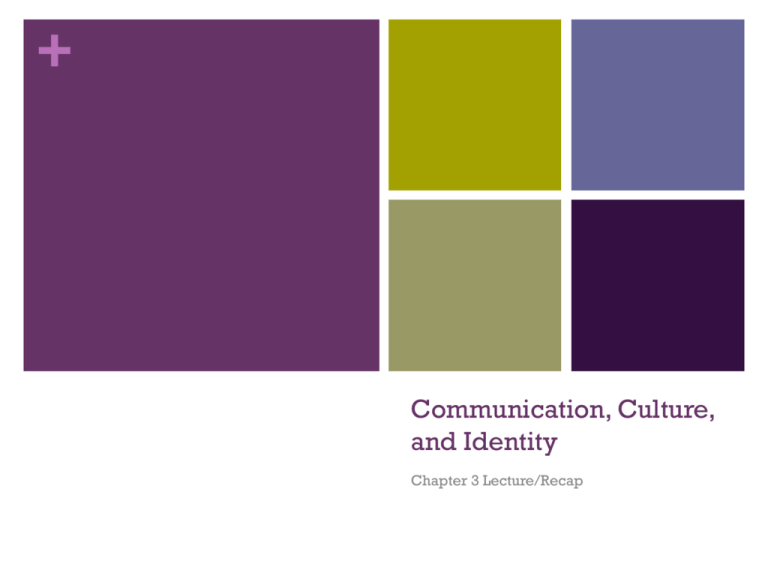
+ Communication, Culture, and Identity Chapter 3 Lecture/Recap + What is Culture? Shared, personal, and learned life experiences Values, norms, traditions Values = standards Norms = patterns of communication Traditions Impacts = customs worldview and interpersonal communication + Cultural Identity ‘…cultural Everyone background helps shape identity’ (p. 54) is a cultural being Made up of ethnicity, gender, age, life stage, beliefs, values, assumptions; intersection of these elements Learned from family, friends, and communities (e.g. guideposts) Varies Will in strength & content impact our views, behaviors, and practices Including communication Can you have multiple cultural identities? + Intercultural Communication Importance? Occurs when individuals from different countries communicate? The only case? + Dimensions of Culture Cultural Uncertainty avoidance Distribution of Power (high vs. low power distance) Masculine vs. Feminine Individualism vs. Collectivism Context variability theory orientation theory High context vs. low context + Culture is…. Learned Enculturation Acculturation Capable of creating communities Co-cultures Cultural clash Good or Bad? Multi-leveled Mini-cultures EXAMPLE: Never Been Kissed (film) + Application Paper #1 (Worth 30 points) Converse with someone from a different generation about one of the following topics: Social networking Reality television Politics September 11th Terrorist Attack Hip-Hop Music Feminism How did the conversation go? Do you think culture played a role? Why or why not? Note other cultural differences that may have played a role Go back to chapter 2—how did the conversation shape your perceptions? Explain. Go back to chapter 1—explain if your encounter was interpersonal or impersonal, and why. Address these questions in a 1-2 page typed document (double space). Do not write out entire conversation; just respond to questions after reflection. In addition, do not write a paper on your view of the topic; focus on the questions. Due Monday, June 2nd (also have quiz on Chapter 4 and AE#3 due) + Diversity – Roles and Challenges + Diversity in U.S. “diversity can be challenging” (p. 57) Why? Diversity increasing + Six Reasons for Studying Intercultural Communication Technological imperative Demographic imperative Melting pot vs. salad bowl Economic imperative Global village, outsourcing, globalization Peace imperative Self-awareness imperative Ethical imperative + Challenges and Solutions + Challenges Ethnocentrism Stereotyping + Challenges (continued) Anxiety and Uncertainty (In-groups vs. out-groups) Misinterpretation of Nonverbal and Verbal Behaviors Assuming similarities and/or differences + Improving Intercultural Understanding Acknowledging and eliminating biases, stereotypes, and prejudices Takes effort; some unknown Examples: “no homo” “acting black/white” “Muslim=terrorist” Others? + Improving Intercultural Understanding Be tolerant of the unknown Educate yourself Cultural respect Avoid cultural imperialism; practice cultural empathy Be prepared Recognize the individual; not just their cultures
